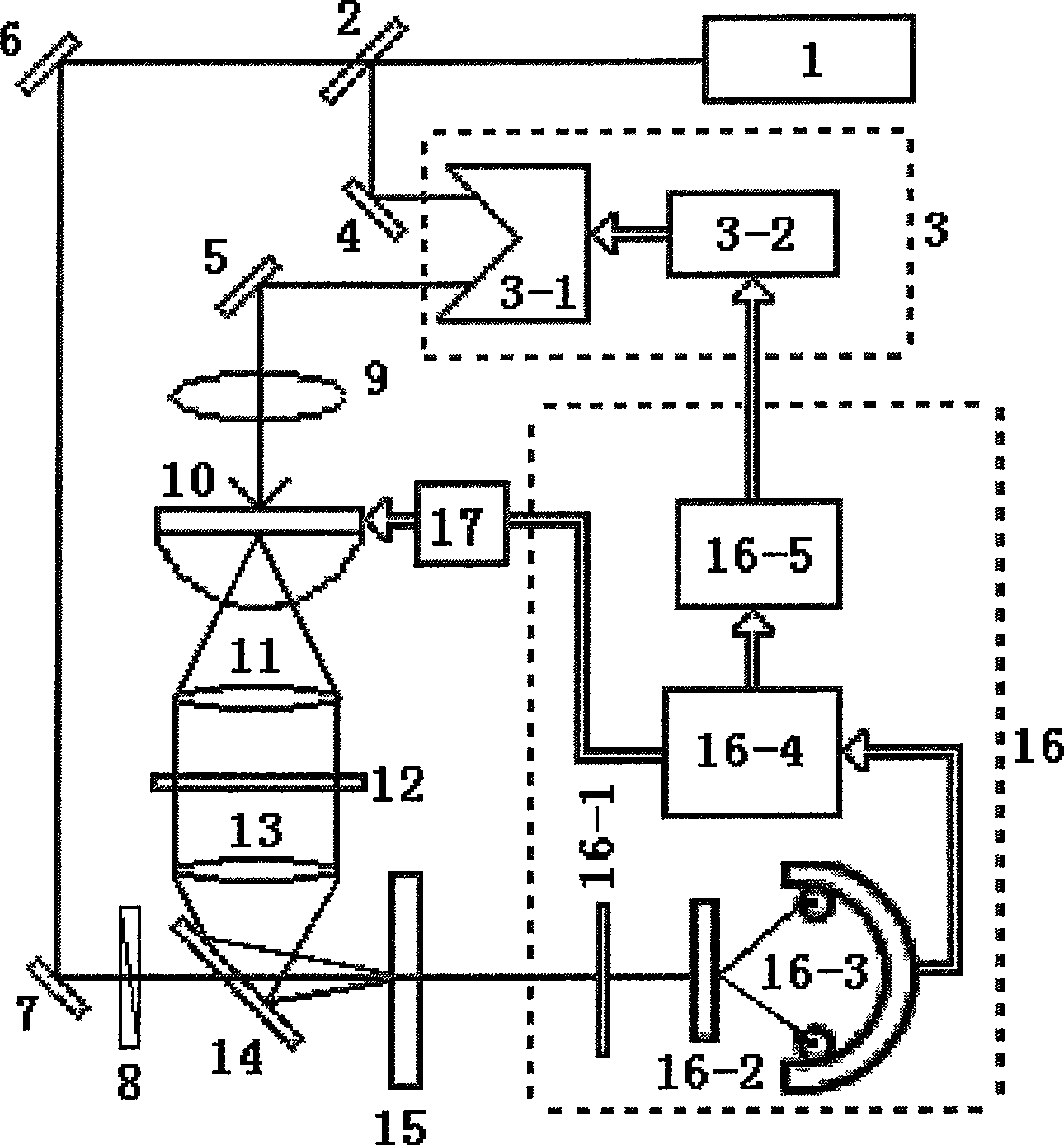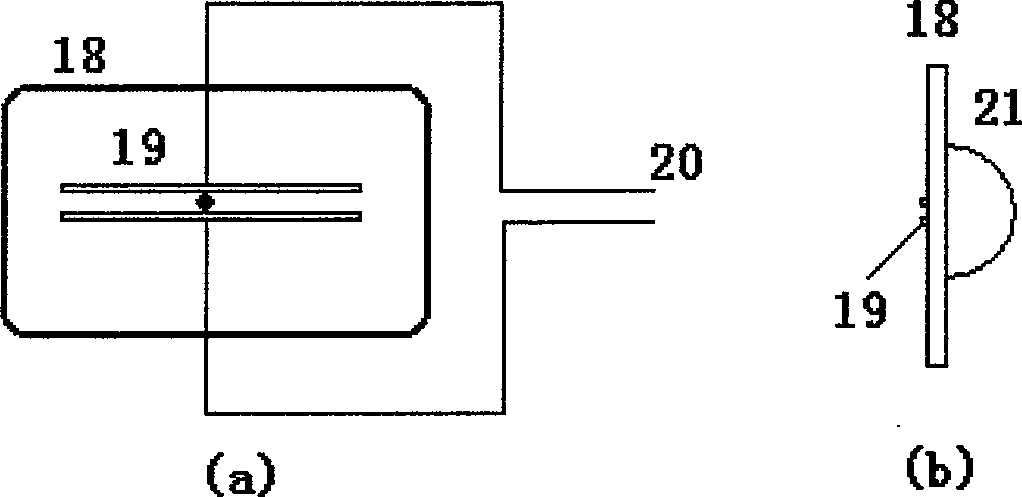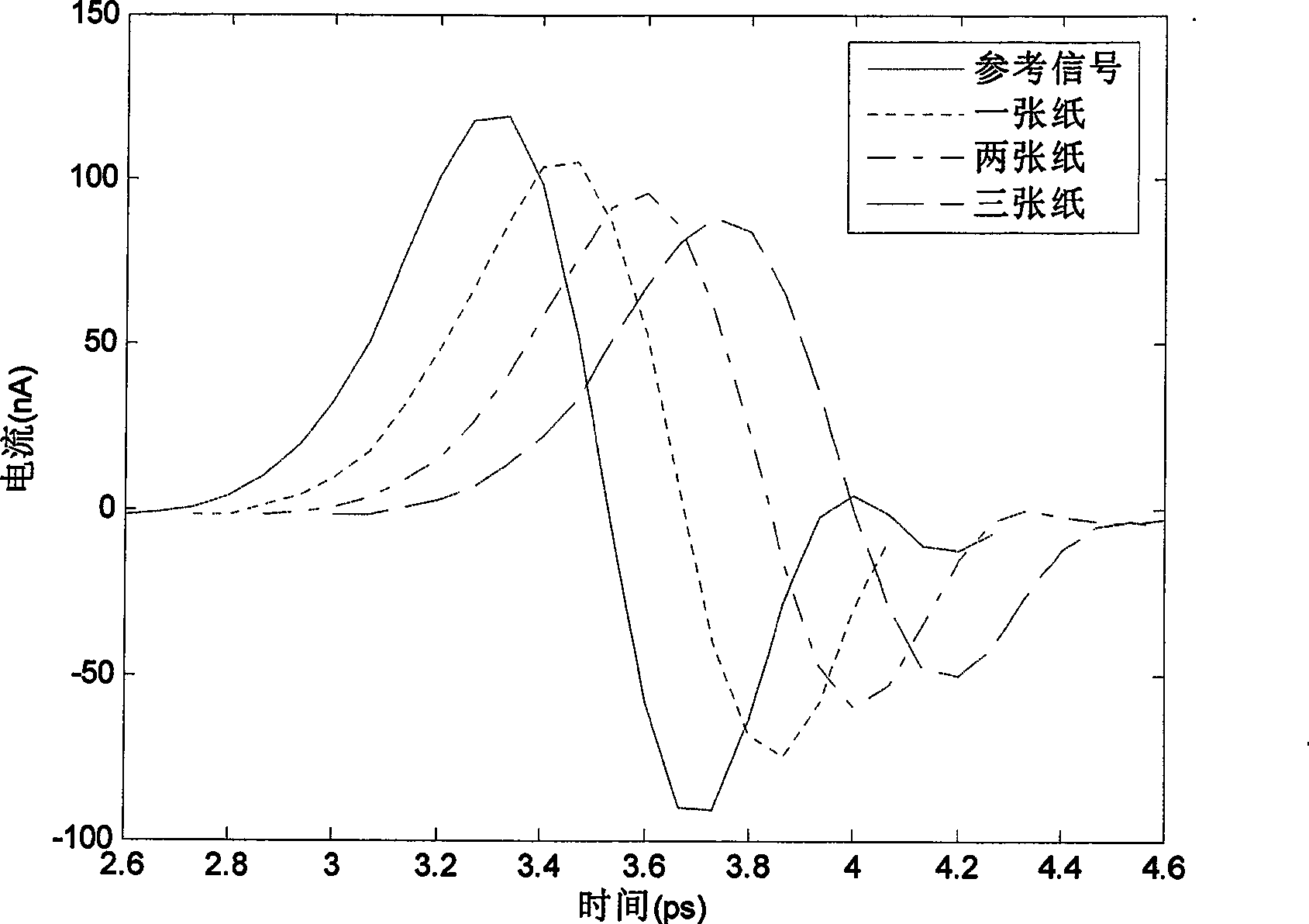Page quantitative determination device and methods based on terahertz time-domain spectroscopic technology
A terahertz time domain and quantitative detection technology, which is applied in the application field of terahertz technology, can solve the problems of harmfulness to the human body, being easily affected by scattering and diffuse reflection, and the existence of radioactive pollution, so as to achieve low energy, no radioactive pollution, and avoid The effect of multiple reflections
- Summary
- Abstract
- Description
- Claims
- Application Information
AI Technical Summary
Problems solved by technology
Method used
Image
Examples
Embodiment Construction
[0027] like figure 1 As shown, the femtosecond laser light emitted by the femtosecond laser 1 in the paper quantitative detection device based on terahertz time-domain spectroscopy technology is divided into two beams by the beam splitter 2, and one beam of laser light passes through the first reflector 4 and the optical delay line. 3-1 and the second reflecting mirror 5 are then focused by the focusing lens 9 onto the photoconductive antenna type terahertz transmitter 10 to generate terahertz waves, and the generated terahertz waves are collimated by the first polyethylene lens 11 into parallel beams to irradiate On the test paper sample 12, after passing through the test paper sample 12, it is focused by the second polyethylene lens 13, reflected by the ITO conductive glass 14 onto the zinc telluride electro-optic crystal 15; another beam of laser light is reflected by the third reflector 6 and the fourth reflector After the mirror 7 and the polarizer 8 are transmitted throu...
PUM
 Login to View More
Login to View More Abstract
Description
Claims
Application Information
 Login to View More
Login to View More - R&D
- Intellectual Property
- Life Sciences
- Materials
- Tech Scout
- Unparalleled Data Quality
- Higher Quality Content
- 60% Fewer Hallucinations
Browse by: Latest US Patents, China's latest patents, Technical Efficacy Thesaurus, Application Domain, Technology Topic, Popular Technical Reports.
© 2025 PatSnap. All rights reserved.Legal|Privacy policy|Modern Slavery Act Transparency Statement|Sitemap|About US| Contact US: help@patsnap.com



